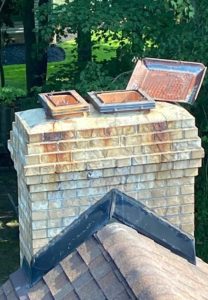IS A HOME INSPECTION AND AN APPRAISAL THE SAME THING?
No, they are not. A home inspection is completed by a licensed home inspector and provides insight to issues in the home. An appraisal is typically done to determine the value of the home for a loan.
DOES A HOME INSPECTOR NEED TO BE LICENSED IN OHIO?
Yes, a home inspector in Ohio must be licensed. Ohio home inspectors are governed by the Ohio Department of Commerce’s Division of Real Estate & Professional Licensing. Ohio home inspectors are required to complete continuing education annually. Radon and wood destroying insect inspectors must also be licensed in the state of Ohio. The Ohio Department of Health regulates radon testing and The Ohio Department of Agriculture trains and licenses wood destroying inspect inspectors.
HOW TO CHOOSE A HOME INSPECTOR?
Often times a realtor may suggest a home inspector they have worked with before or provide you with a list of three they recommend. However, you are not obligated to use these inspectors and you should do your own due diligence in finding an inspector. Make sure the inspector you choose will provide you with an unbiased opinion of your future investment and new home. Your inspector should be able to explain the defects and safety issues found, and answer any follow up questions you have after the report is sent.
WHO ATTENDS A HOME INSPECTION?
The buying agent should be present for the home inspection. It is recommended that the buyer is present for at least part of the inspection. This gives the buyer the opportunity to ask the home inspector questions, visualize some potential problems, and give them a better understanding of their future home.
WHAT DO HOME INSPECTORS LOOK FOR?
A home inspection is visual inspection of your future home. The home inspector will look and report on:
- Heating system
- Central air condition system (temperature permitting)
- Roof and rain gutters
- Attic, including visible insulation
- Interior plumbing
- Electrical systems
- Walls and ceilings
- Floors
- Windows and doors
- Foundation
- Basement
- Structural Components
IS A HOME INSPECTION REQUIRED?
A home inspection is not required; however, it gives peace of mind about your investment. Home inspectors can often find issues that the buyer may not be aware of, giving possible negotiating power or even a better idea of what expenses you may need to budget for in the future.
HOW MUCH IS A HOME INSPECTION?
The cost of a home inspection typically depends on the size of the house. Generally, this ranges from $350-500 for a home inspection, not including any additional testing such as radon, wood destroying insets or mold testing.
WHO PAYS FOR A HOME INSPECTION?
The buyer usually pays for a home inspection and any additional testing such as radon testing, wood destroying insects, or mold testing.
HOW LONG DOES A HOME INSPECTION TAKE?
Home inspections typically take about 3 hours for the average home. Some larger homes may take a little longer.
HOW LONG DOES IT TAKE TO GET THE INSPECTION REPORT BACK?
This varies with each inspector. With Beta Property Inspections, the report will be sent within 24 hours of the inspection being completed.
WHAT TO DO WITH YOUR INSPECTION REPORT
Your home inspection report will identify defects in the home. Beta Property Inspections reports include pictures and videos if needed. The defects found on the report can be used for repair credits, lowering the sales prices, asking the seller to make repairs, or simply as a repair and maintenance checklist for your future home.
Call Beta Property Inspections today at 330-310-1730 to answer any other questions you may have or to schedule your unbiased home inspection. You can also check us out online at www.BetaPropertyInspections.com





